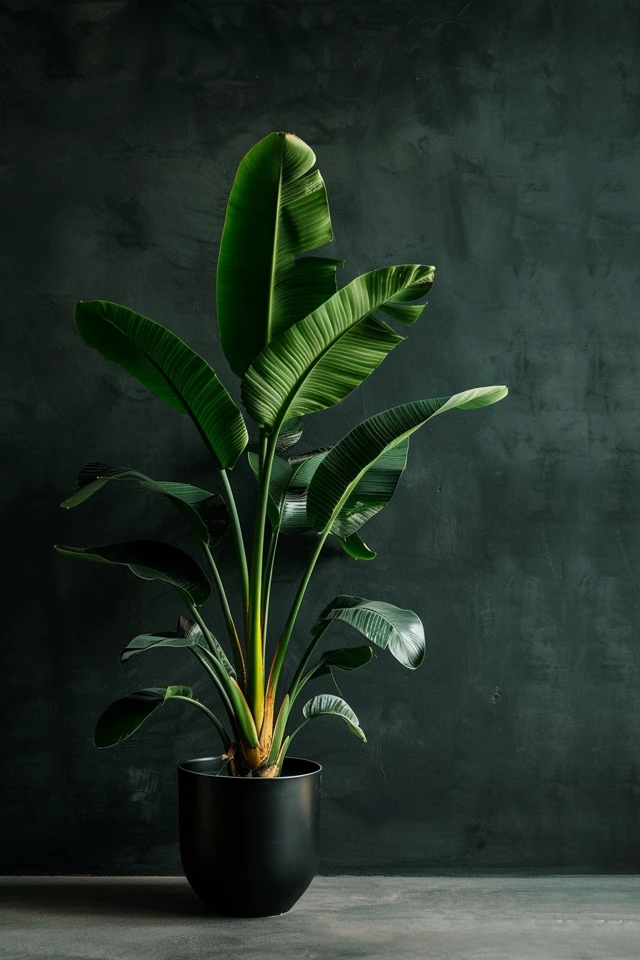When it comes to growing a banana tree, there are numerous varieties to choose from. With over 1,000 types cultivated for consumption, banana plants offer a diverse array of flavors, colors, and textures. Whether you’re a tropical plant enthusiast or simply curious about different banana tree varieties, understanding the basics of banana tree identification can enhance your gardening experience.
Before diving into identification tips, it’s essential to know that banana plants are not actual trees but large herbs with succulent stems. These plants have been thriving for over a million years in tropical regions worldwide, such as Southeast Asia, the Caribbean, Latin America, Africa, and the Pacific.
Banana trees can grow up to 20-40 feet tall in just nine months, making them a remarkable addition to any garden. Each variety possesses unique characteristics, including fruit shape, color, flavor, and growing zone. From the Scarlet Banana to the Blue Java Banana, each type offers a distinct taste and appeal.
Key Takeaways:
- There are over 1,000 varieties of bananas cultivated for consumption.
- Banana plants are large herbs with succulent stems.
- Bananas have existed for over a million years in tropical regions.
- Banana trees can reach heights of 20-40 feet in just nine months.
- Different varieties of banana trees include Scarlet Banana, Blue Java Banana, and many others.

What Does a Banana Tree Look Like?
Banana trees are often mistaken for trees, but they are actually large herbs that grow succulent stems. Their appearance varies depending on the specific variety, but in general, banana trees have large, wide leaves that resemble those of a tropical plant. The stems are not made of traditional wood, but rather succulent and fleshy material. Banana plants bear fruit in the form of bunches that hang from the top of the plant. The fruit starts as a flower bud and eventually develops into individual bananas. Banana trees are typically green in color, with some varieties having a blue-green peel. The size of a banana tree can range from 20-40 feet tall, with leaves that can grow several feet long.
In addition to their distinct appearance, banana trees have a unique structure that sets them apart from traditional trees. Their large leaves grow in a spiraling pattern around the stem, creating a lush and vibrant canopy. This canopy provides shade and protection for the fruit, as well as a visually stunning display in any tropical garden.

How to Identify Different Varieties of Banana Trees
When it comes to banana trees, there are numerous varieties, each with its own unique characteristics. Whether you’re a seasoned tropical plant enthusiast or just starting out, it’s fascinating to explore the diverse range of banana tree species. Some popular varieties include:
- Scarlet Banana
- Lady Finger Banana
- Musa Ornata (Pink Serpent)
- Hardy Banana
- Red Banana
- Blue Java Banana
- Musa Sikkimensis (Darjeeling)
- Goldfinger Banana
- Musa Arunachalensis
- Musa Nagensium
- Pisang Awak
- Saba Banana
- Musa Sapientum
- Abaca
- Musa Velutina (Velvet Pink)
- Musa Acuminata
- Plantain
- Cavendish Banana
- Musa Troglodytarum (Fei banana)
- Musa Ochracea (Crepe banana)
- Musa Muluensis
- Musa Maclayi (Orange banana)
Each variety has its own unique flavor profile, growing zone, and appearance. For example, the Blue Java Banana offers a sweet and creamy taste with a hint of vanilla, while the Red Banana delights the palate with its sweet flavor and tang, similar to raspberries.
“Exploring the different banana tree varieties is like embarking on a flavor adventure. Each variety brings its own distinct taste, texture, and aroma to the table, offering a delightful range of flavors to enjoy.”
Identifying the variety of a banana tree can be done by closely examining the shape and color of the fruit, as well as observing the overall appearance of the plant. Pay attention to the size, color, and texture of the leaves, as well as the shape, size, and color of the fruit bunches. These visual cues can help you determine the specific variety of your banana tree.

Conclusion
Identifying the variety of a banana tree can be an exciting endeavor for tropical plant lovers. By understanding the different types of banana trees and their unique characteristics, you can enhance your garden and enjoy the variety of flavors and textures that banana plants offer.
Remember that banana trees are not actually trees, but rather large herbs that grow succulent stems. When growing a banana tree, it’s important to consider the specific variety’s growing zone, flavor profile, and appearance. With proper care and maintenance, banana trees can thrive and produce an abundance of delicious fruit.
Whether you choose a Scarlet Banana, Blue Java Banana, or any other variety, adding banana trees to your garden can bring a touch of the tropics to your outdoor space. Explore the different types of banana trees available and select the ones that best suit your climate and personal preferences.
Enjoy the process of growing different types of banana trees, and watch as your tropical garden comes to life with their vibrant foliage and delicious fruit. Whether you’re a seasoned gardener or a beginner, banana trees offer a unique and rewarding experience. Get started today and transform your garden into a tropical paradise!

